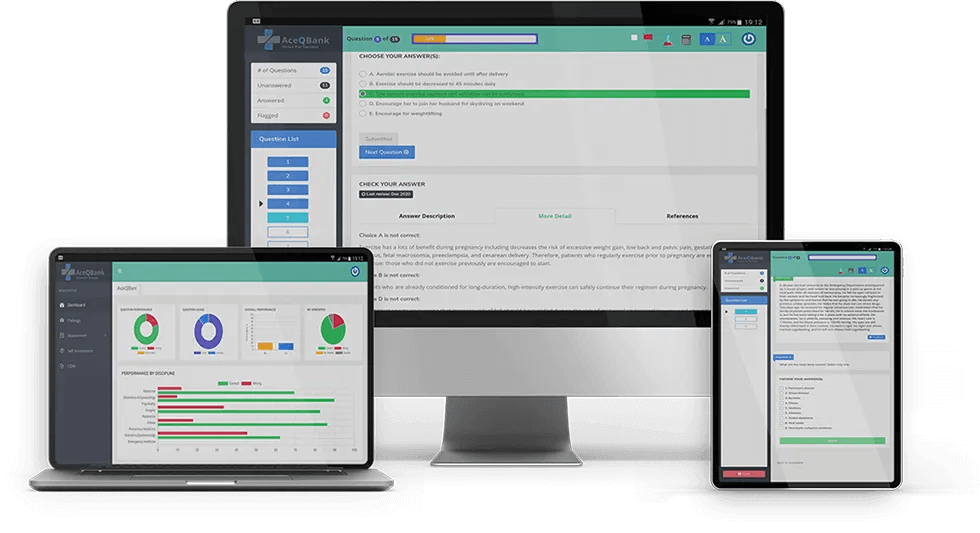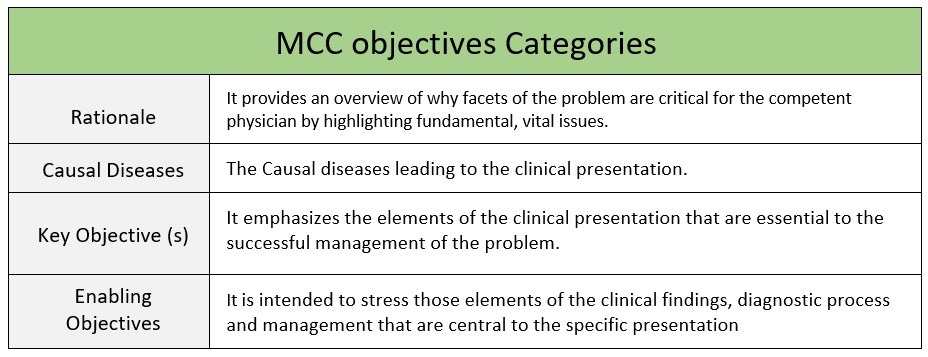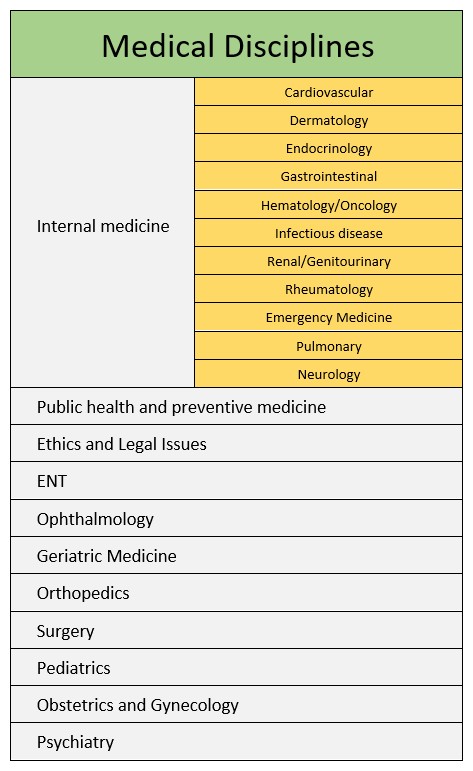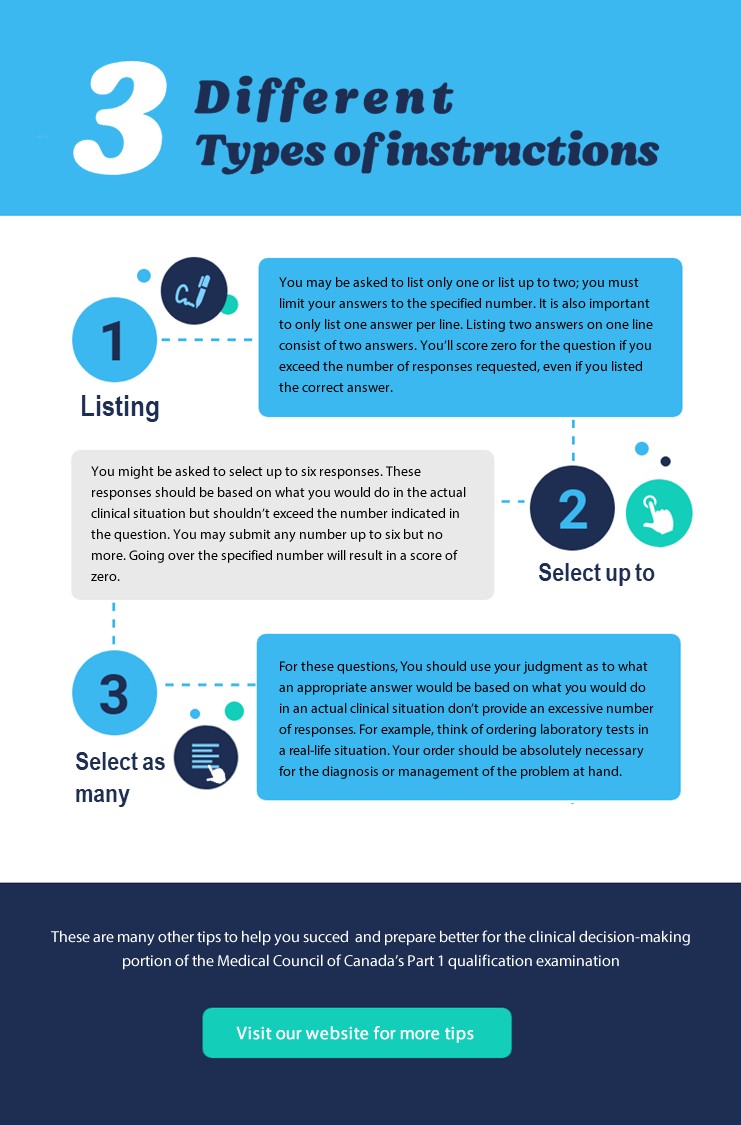A delightful insight into the MCCQE part 1 exam

Medical Council of Canada Qualifying Examination (MCCQE) Part 1 is considered the most important stage in the journey of Canadian medical students and international medical graduates (IMG) to obtain a Licentiate of the Medical Council of Canada (LMCC) from the Medical Council of Canada (MCC).
The MCCQE 1 exam is a one-day computer-based exam that assesses a candidate’s medical knowledge and clinical decision-making skills at the level expected of a medical student completing a medical degree in Canada. Nevertheless, there is not much clarity and insight provided about the MCCQE 1 exam.
Therefore, this article attempts to provide an excellent overview of the MCCQE part 1 exam and provide as much information as possible about the structure of the exam.
The MCCQE part 1 exam format
The MCCQE Part 1 examination will have the following format. There will be two parts to the MCCQE Part 1 exam, one in the morning multiple choices questions (MCQs), and the other in the afternoon (clinical decision-making cases (CDMs), with a break with 45-minutes break in between. It is more than enough for freshening up and having a snack.
The MCCQE 1 exam has 210 multiple-choice questions (MCQ). Questions are not divided into sections and are designed to be answered independently, one after the other. Five options are available for each question. The answer choices might be similar, but there is always only one best answer, one correct answer for each question. The exam usually takes about 3.5 – 4 hours to complete the exam. On the other hand, in the afternoon, you will have up to three and a half hours to complete the Clinical Decision-Making component, which contains 38 cases with short-menu questions and short-answer questions (65 to 75 questions total).
The general consensus regarding the MCCQE part 1 exam is that it only assesses the medical knowledge and clinical decision-making skills of the candidate, but in reality, the MCCQE 1 exam will challenge your test-taking ability to see how well you can process information and make a critical decision under pressure.
Read more on the MCCQE part 1 exam format
Insight into the MCCQE 1 exam MCQs
The morning part of the MCCQE part 1 exam is the most challenging part of the exam, and you’ll have to perform at your very best. Test-taking strategy is crucial in this section. An effective test-taking strategy makes all the difference. The person who employs smart test-taking strategies will score high.
First and foremost, you need the energy to answer 210 MCQs within 3.5 to 4 hours, so have a good breakfast and try to be on time to avoid any unnecessary stress.
Second, pay attention to the stem of the MCQs. The purpose of the stem is to present a clinical case in a clear and concise manner. The stem should contain all the details like patient age, laboratory results, imaging study, and components of the presenting history and physical examination to help you choose the appropriate answer. You should be able to:
- Understand each question the first time (avoid re-reading)
- Identify the main clues
- Avoiding overanalyzing the question
- Avoiding reading into the question
- Make sure you understand the direction of the last sentence of the stem
- Exclude non-relevant options
- Differentiated between similar options and choose the correct answer
This is completely possible and not at all difficult. You are fully capable of doing this; even those who are intimidated by this list can do it in less than a minute with practice.
One of the keys to success in the MCCQE 1 exam is time management. You must master time management because it is a game-changer on actual exam day. All you need to do is practice. Your time will be improved significantly through practice, as will your speed and accuracy in answering questions.
The Ace Qbank offers two study modes: time mode and tutor mode so that you can pace your studying, practice your test-taking strategies, and refine your timing. However, if you want to test your test-taking skills or time management skills, you can use the Ace Qbank self-assessments to analyze your performance. The self-assessments are designed based on the Medical Council of Canada (MCC) objectives for accurate assessment of performance and are a true simulation of the MCCQE part 1 exam.
What’s on the MCCCQE1 exam?
The MCCQE1 exam is a standardized exam designed to measure how well you’ve mastered the content, make a clinical decision, and manage the patient. For those who have studied medicine in Canada and graduated from medical school in Canada, the requirement for the MCCQE 1 exam is clear as a day. For international medical graduates (IMGs), on the other hand, it might not be clear. It is hard to pin down exactly what are the MCCE1 exam requirements are, but you need to cover the MCC objectives and keep in mind the MCCQE1 blueprint while you prepare for the MCCQE1 exam and during the actual exam. I will go into detail below and discuss the MCCQE 1 exam requirement.
There are two main elements of medical disciplines that I have included in the table below and the MCC objectives. Each of the MCC objectives has four categories and categories as follow:
- Rationale
- Causal Conditions or Diseases
- Key Objective (s)
- Enabling Objectives
Acing the MCCQE1 exam is based on how well one comprehends these four categories because from that point on, it’s clear as day what to expect on the exam, how to approach, and ultimately prepare well for the MCCQE1 exam. Therefore, we have included an explanation for every single category of the MCC objective in table-2.
The table-1 looks intimidating; however, despite its frightening appearance, this is not what is on the MCCQE1. This table demonstrates a good layout for USMLE steps; the majority of IMGs are familiar with this layout and have approached and are approaching the MCCQE1 exam the same way they approach the USMLE steps, which is the wrong approach for the MCCQE 1 exam and will result in uncertainty and worst-case scenario failure and giving up.
Now that we’ve covered the layout. Let’s move on to the next step in preparation for the MCCQE1 exam: the MCC objectives list and categories. Since the MCCQE1 exam is clinically oriented rather than fundamental science, you should utilize the layout (medical disciplines) as a guide to navigate through the MCC objectives list, focusing on two categories of Key Objective (s) and Enabling Objectives. This concept is apparent to Canadian medical students; therefore, the preparation for the MCCQE1 exam considerably easier. However, you’ll be able to prepare more effectively now that you know what you should be paying attention to.
You need to adjust your mentality and realize that the MCCE1 exam is not the same as the USMLE Step 2 CK and that although utilizing First Aid may help you comprehend the key points and quickly study the materials, but it is not enough to meet all of the requirements for the MCCQE 1 exam. You’ll face challenges when it comes to clinical decision-making, which is the last thing anyone wants to experience during an exam.
The MCCQE 1 exam is only one component of your application for Canadian residence. You must perform to your best ability since if you pass the exam, you can’t retake the exam to improve your score. On the other hand, scoring well on this exam is important, and it will boost your application.
For the MCCQE 1 exam, you should go through the MCC objectives, and that’s what on exam period.
MCCQE1 blueprint
MCCQE1 blueprint helps you to focus on what’s essential throughout your MCCQE1 exam preparation. The blueprint helps you see the cross-path in healthcare and keep it in mind while diagnosing and managing patients. During the exam preparation, knowing about the blueprint will help you focus on those similarities and differences between certain medical conditions, differential diagnoses, and distinctive key points, along with ethical challenges, which will come in handy while selecting the correct answer for MCQs or excluding options. The MCCQE1 blueprint is the light in the darkness; without it, preparing for the MCCQE1 exam is an uphill battle.
Insight into the MCCQE 1 exam CDM
In the MCCQE 1 exam afternoon session, you will have up to three and a half hours to complete the Clinical Decision-Making component, which contains 38 cases with short-menu questions and short-answer questions (65 to 75 questions total).
While the morning part of the MCCQE part 1 exam is quite challenging, the afternoon part is significantly less challenging, but it has its difficulties. Therefore, you should not let your guard down.
Within the CDM part of the MCCQE part 1 exam, a single-patient or family-centered vignette may include two or three questions based on the introductory vignette. Like multiple-choice questions, CDM case questions are meant to be answered independently of one another, and each will include several options.
The CDM part of the MCCQE part 1 exam evaluates your ability to assess the severity of a patient’s illness, properly diagnose it and select the most appropriate clinical care based on the clinical scenario presented. As well as your ability to make critical clinical decisions and appropriately manage and treat the patient.
First and foremost, you need the read the instruction carefully and follow the instruction.
Second, decide for patient based on the Canadian guideline, recommendations, and follow the protocols. Your clinical experience can work for or against you here; make sure to follow the protocol.
In addition, Ace Qbank offers a large number of high-yield CDM cases designed for practicing clinical decision-making, management, and treatment based on the MCC objectives.
CDM tips for better preparation:
To help you prepare yourself for the clinical decision-making portion of the Medical Council of Canada’s Part 1 qualification examination, here are a few tips:
Time management:
The afternoon CDM part of the MCCQE1 exam is more relaxing than the morning MCQs part, and it sure seems as you have plenty of time, but that doesn’t you should lower your guard. The first thing that you’ll want to focus on is how you manage your time. If you find yourself spending more than three minutes on a question, you should probably flag the question and move on. You can return to these flagged questions at any time or wait until you’ve completed all the remaining questions or cases when you will know how much time you have left.
Instructions:
The next thing is paying attention to the instructions. Each question has followed by specific instructions. Whether it’s a multiple-choice menu question, or one requiring a written answer, there will be specific instructions on how to answer each individual question. These instructions must be followed exactly. Your final score will reflect both tested knowledge and how well you followed the question instructions. There are different types of instructions.
Question type one:
Listing a specified number of answers.
Now, for example, you may be asked to list only one or list up to two; you must limit your answers to the specified number. It is also important to only list one answer per line. Listing two answers on one line consist of two answers. You’ll score zero for the question if you exceed the number of responses requested, even if you listed the correct answer.
Question type two:
Selecting up to a specified number of answers.
You might be asked to select up to six responses. These responses should be based on what you would do in the actual clinical situation but shouldn’t exceed the number indicated in the question. You may submit any number up to six but no more. Going over the specified number will result in a score of zero.
Question type three:
Select as many answers as are appropriate.
For these questions, You should use your judgment as to what an appropriate answer would be based on what you would do in an actual clinical situation don’t provide an excessive number of responses. For example, think of ordering laboratory tests in a real-life situation. Your order should be absolutely necessary for the diagnosis or management of the problem at hand.
Score:
It is also very important to understand how the examination will be scored. Negative marks are not given; you either get one point for being correct or zero if you’re not. Partial marks are also sometimes awarded when more than one answer is being scored. There are two other situations where you might score zero for a question:
- Suppose you exceed the number of responses specified in the question. As I previously mentioned, you will score zero.
- You will also score zero if you select or list an item that could hurt or injure a patient. Even if your list contains the correct answer, including an option in your answer that could be harmful to the patient will result in a score of zero.
Patient history:
Finally, remember that everything presented in the clinical scenario is relevant, and you should pay attention to the details. For example, knowing that a patient is a long-haul truck driver, a letter carrier, a production line worker, or anything else is likely relevant to the case. Please review these examination tips again. The information will help you navigate successfully through the exam.
MCCQE1 score
The MCCQE part 1 exam requires a minimum passing score of 226. This corresponds to answer 60 to 70 percent of the questions correctly. The total score is calculated by combining MCQs and CDMs. Each correct answer for both MCQs and CDM questions is worth one point, while each wrong response is worth zero points. Candidates can get more than one point for some CDM questions, such as those with several correct answers. For example, if you properly answer a question with three components, you can get up to three points.
Read more about the MCCQE part 1 exam outline
In the end, we would like to offer Ace Qbank as a source for MCCQE part 1 exam preparation since it is designed based on the Medical Council of Canada (MCC) objective. It has over 1700+ high yield questions, Challenging Clinical decision-making (CDM) cases, and Self-assessments that are a true simulation of the MCCQE 1 exam and push you to your limits.
At Ace Qbank, we work hard to maintain the content up to date and in accordance with medical standards of care. We evaluate the question bank on a regular basis based on current guidelines and recommendations, and we implement any changes we make as soon as possible to enhance your learning experience.
Try Ace Qbank out today!






